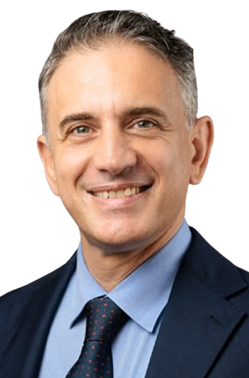Bio.: Massimo Alioto received the Laurea (MSc) degree in Electronics Engineering and the Ph.D. degree in Electrical Engineering from the University of Catania (Italy) in 1997 and 2001, respectively. He is a Professor at the Department of Electrical and Computer Engineering, National University of Singapore where he leads the Green IC group, and is the Director of the Integrated Circuits and Embedded Systems area and the FD-FAbrICS industry-sponsored lab. Previously, he held positions at the University of Siena, Intel Labs – CRL (2013), University of Michigan Ann Arbor (2011-2012), BWRC – University of California, Berkeley (2009-2011), and EPFL (Switzerland, 2007).
He has authored or co-authored more than 350 publications on journals and conference proceedings. He is co-author of five books, In-Memory and Immersed-in-Logic Primitives for Ubiquitous Hardware Security (Springer, 2023), Adaptive Digital Circuits for Power-Performance Range beyond Wide Voltage Scaling (Springer, 2020), Enabling the Internet of Things – from Circuits to Systems (Springer, 2017), Flip-Flop Design in Nanometer CMOS – from High Speed to Low Energy (Springer, 2015) and Model and Design of Bipolar and MOS Current-Mode Logic: CML, ECL and SCL Digital Circuits (Springer, 2005). His primary research interests include widely energy-scalable integrated systems, self-powered wireless integrated systems, near-threshold circuits for green computing, data-driven integrated systems, hardware security, and emerging technologies, among the others.
He was the Editor in Chief of the IEEE Transactions on VLSI Systems (2019-2022), and the Deputy Editor in Chief of the IEEE Journal on Emerging and Selected Topics in Circuits and Systems (2018). He is the Chair of the Distinguished Lecturer Program for the IEEE Circuits and Systems Society (2023-2024), and was Distinguished Lecturer for the same Society (2022-2023, 2009-2010) and the Solid-State Circuits Society (2020-2021). He was also member of the Board of Governors of the IEEE Circuits and Systems Society (2015-2020), and Chair of the “VLSI Systems and Applications” Technical Committee (2010-2012). In the last five years, he has given 50+ invited talks in top conferences, universities and leading semiconductor companies. His research has received various best paper awards (e.g., ISSCC, ICECS), public recognition from industry (e.g., among 10 technology highlights from TSMC in 2020), and his group has been recognized as top contributor at the VLSI Symposium on Circuits (2023). He served as Guest Editor of several IEEE journal special issues (e.g., JSSC, TCAS-I, TCAS-II, JETCAS). He also serves or has served as Associate Editor of a number of IEEE and ACM journals. He is/was Technical Program Chair (e.g., ISCAS, SOCC, ICECS, NEWCAS, APCCAS), Track Chair in a number of conferences (ICCD, ISCAS, ICECS, VLSI-SoC, APCCAS, ICM), ISSCC and ASSCC subcommittee member. Prof. Alioto is an IEEE Fellow.




